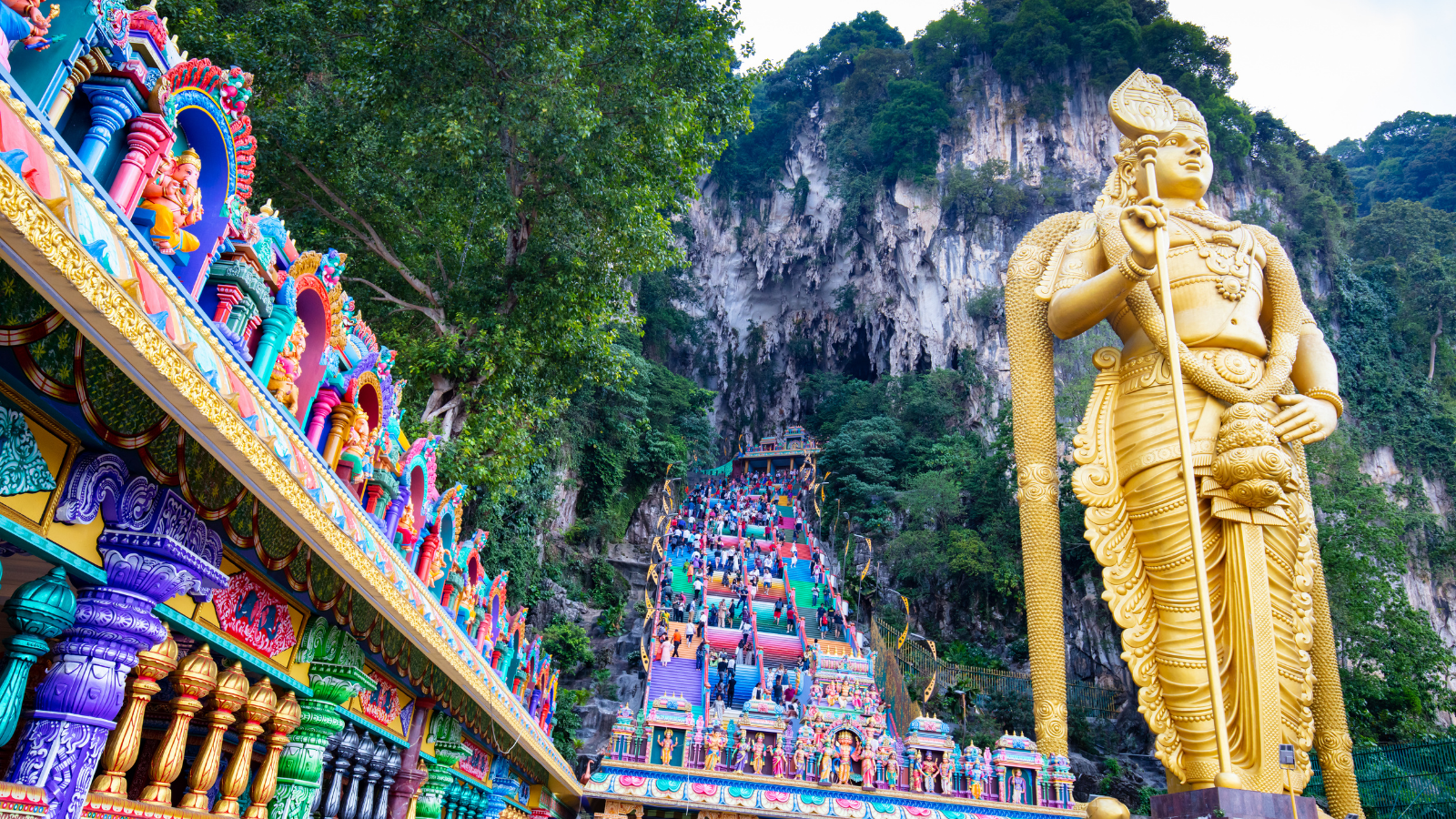
Top Cultural Destinations to Visit in Malaysia:
Malaysia is a treasure trove of cultural diversity, blending Malay, Chinese, Indian, and indigenous influences into a vibrant and dynamic society. From historic cities and traditional villages to sacred temples and cultural museums, Malaysia offers travelers an enriching experience rooted in heritage. This guide will take you through some of Malaysia's top cultural destinations that every culture enthusiast should visit.
George Town, Penang:
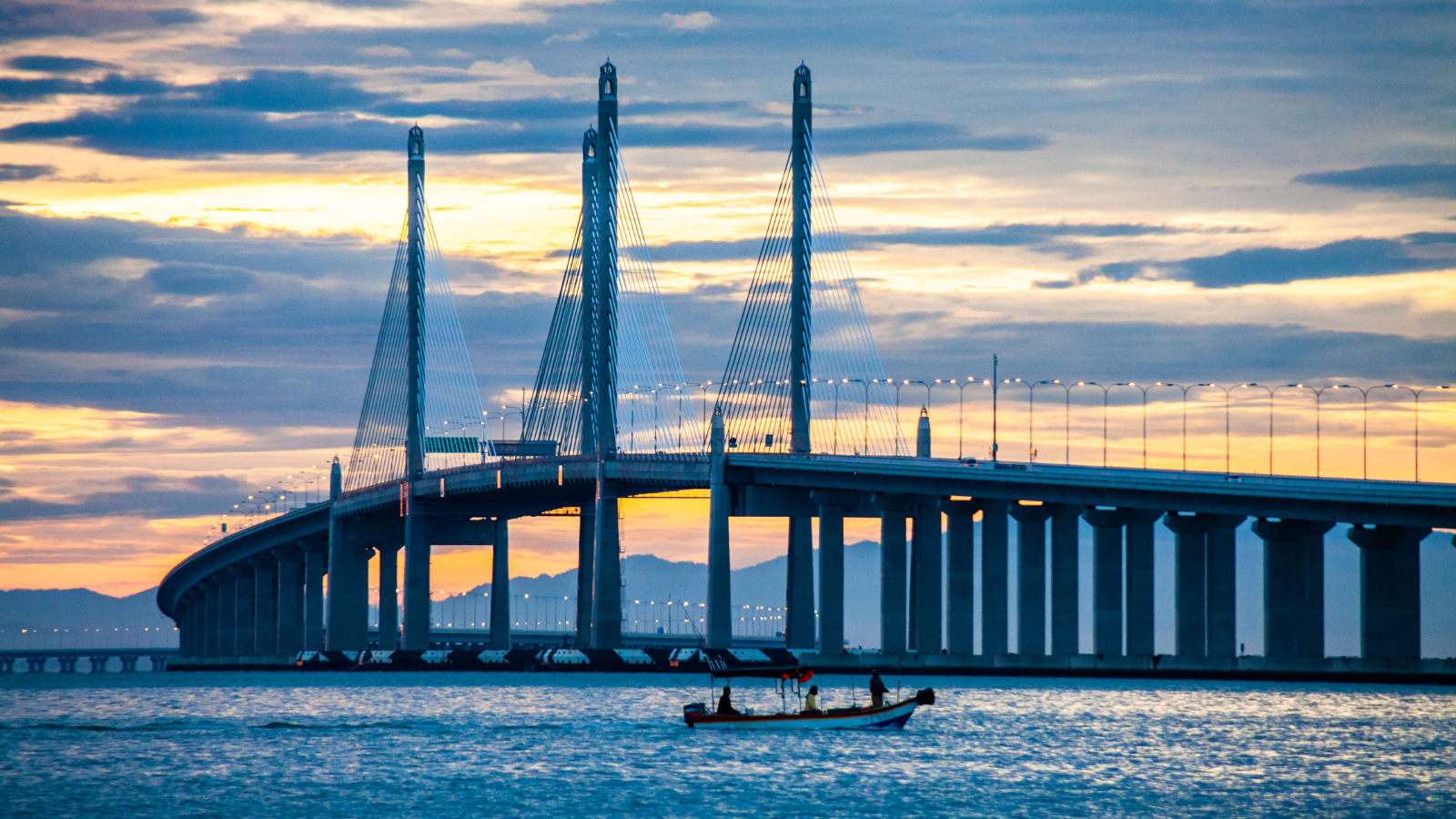
Why Visit:
A vibrant melting pot of cultures, George Town is a UNESCO World Heritage Site celebrated for its rich historical architecture, diverse communities, and flourishing arts scene. The city’s streets are a living gallery where colonial buildings stand alongside Chinese temples, Indian shrines, and Malay mosques, all interwoven to create a tapestry that tells the story of Penang’s multicultural heritage. It’s a place where history meets modernity, with charming cafes and galleries nestled among centuries-old structures, offering travelers an immersive experience in Malaysia’s cultural diversity.
Highlights:
Street Art Tour
One of George Town’s most captivating features is its thriving street art scene, which breathes life into its historic streets. The city is renowned for its street murals created by artists like Ernest Zacharevic, whose works are scattered across walls, alleys, and building facades. These murals often depict local life and historical scenes with a playful touch, such as children riding bicycles, vendors selling food, or characters from Penang’s folklore. A self-guided street art tour offers an exciting way to explore George Town’s vibrant neighborhoods while appreciating its unique artistic expression.Tip: Start at Lebuh Armenian and Lebuh Cannon, the heart of the city’s street art, and keep your camera ready to capture hidden murals around every corner.
Clan Jetties
The Clan Jetties are a distinctive part of George Town’s heritage, showcasing the city’s Chinese cultural legacy. These jetties are stilted wooden settlements built by Chinese immigrant clans—each jetty is named after the family or clan that settled there, such as the Chew Jetty and Lim Jetty. These communities have lived along the waterfront for generations, with houses, shops, and even small temples built on wooden platforms. Walking along the Clan Jetties provides a fascinating insight into the way of life of Penang’s Chinese immigrant families, and some homes even open their doors to tourists, offering souvenirs and handmade crafts. The jetties, especially during sunset, create an atmospheric and picturesque view of Penang’s waterfront.Must-Visit: Chew Jetty is the most accessible and tourist-friendly, with charming shops, eateries, and views of Penang’s coast. It’s particularly lively during the Chinese New Year celebrations when traditional lanterns illuminate the jetty.
Khoo Kongsi
Khoo Kongsi is one of Penang’s most famous clan houses and an architectural marvel that stands as a symbol of Penang’s Chinese heritage. Built by the Khoo clan, one of the wealthiest and most influential Chinese families in Penang, this clan house is a masterpiece of elaborate carvings, intricate stone and woodwork, and ornate tiled roofs. The structure’s design is based on traditional southern Chinese architecture, with a grand ancestral hall decorated with gilded murals and carved dragons symbolizing strength and protection. Walking through Khoo Kongsi feels like stepping back in time, as it vividly portrays the legacy, pride, and unity of the Khoo clan.Highlights Inside: The clan house features historical exhibits, paintings, and ancestral tablets dedicated to the Khoo clan members. Be sure to look up at the ceilings and pillars to admire the intricate carvings and ornamentation, which represent both Penang’s Chinese heritage and the craftsmanship of past artisans.
Little India
While not a formal part of George Town’s clan heritage, the Little India district reflects the city’s Indian community and is a vibrant and colorful area filled with the aroma of spices, the sound of Indian music, and shops offering traditional sarees and jewelry. Here, you can enjoy authentic South Indian meals, savor street snacks, or shop for handmade crafts and souvenirs. The area truly comes to life during the festivals of Deepavali and Thaipusam, when the streets are decorated, and cultural performances take place.Top Experiences: Stop by the Sri Mahamariamman Temple, Penang’s oldest Hindu temple, known for its ornate towers and colorful carvings, or try the local banana leaf rice and masala chai from one of the street vendors.
- Pinang Peranakan Mansion
For a more immersive glimpse into Penang’s Peranakan (Straits Chinese) culture, the Pinang Peranakan Mansion is a must-visit. This 19th-century mansion belonged to a wealthy Chinese tycoon and is now a museum showcasing the opulent lifestyle and customs of the Peranakan community. Inside, you’ll find an extensive collection of Peranakan artifacts, antique furniture, and intricate jewelry, reflecting the cultural fusion of Chinese and Malay traditions. The mansion’s architecture itself is a blend of Chinese and colonial styles, with beautiful interiors that feature carved wood, porcelain tiles, and stained glass.
Malacca (Melaka):
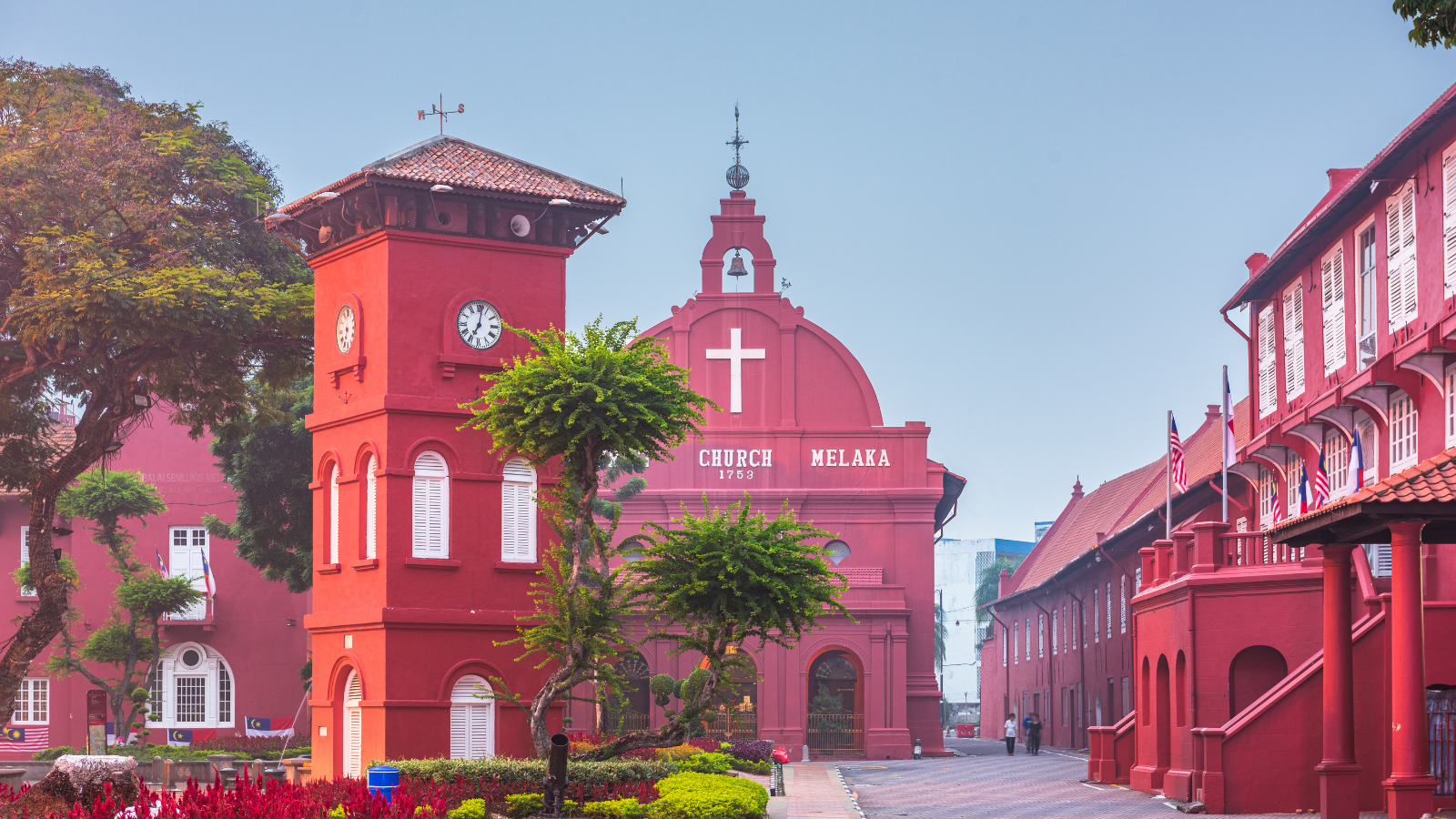
Why Visit:
Malacca, recognized as a UNESCO World Heritage Site, is a historical gem of Malaysia. Often referred to as the “Historic State,” Malacca’s blend of Portuguese, Dutch, British, and local Malay influences creates a unique cultural tapestry that has captivated travelers for centuries. Walking through Malacca is like stepping back in time, with its ancient structures, colorful street markets, and enduring traditions. This city beautifully captures Malaysia’s multicultural heritage, making it a must-visit destination for anyone interested in history and culture.
Highlights
- Jonker Street
Jonker Street, located in the heart of Malacca’s Chinatown, is famous for its bustling night market, where the air is filled with the aromas of local street food and the energy of both locals and visitors alike. The market runs every weekend, offering a diverse array of items that reflect Malacca’s unique heritage—from traditional Malay crafts and Chinese trinkets to Portuguese-inspired antiques. As you wander, be sure to try local delicacies like chicken rice balls, cendol (a refreshing dessert with coconut milk and palm sugar), and popiah (fresh spring rolls). The vibrant atmosphere, live music, and street performances make Jonker Street an immersive experience that celebrates Malacca’s cultural diversity. - St. Paul’s Hill
St. Paul’s Hill, or Bukit St. Paul, is home to some of Malacca’s most famous historical sites. As you make your way to the top, you’ll encounter the ruins of St. Paul’s Church, originally built in 1521 by Portuguese settlers, making it the oldest church structure in Malaysia and Southeast Asia. Today, the church’s open-air structure offers a hauntingly beautiful view, with arched windows and tombstones lining the walls, etched with Portuguese and Dutch inscriptions. From the summit, you’ll enjoy panoramic views of Malacca, including the iconic Malacca Strait, an ancient trade route that shaped the city’s history. The hill also holds the A Famosa Fort, another relic of the Portuguese period, showcasing the military history that played a significant role in Malacca’s past. - Baba & Nyonya Heritage Museum
The Baba & Nyonya Heritage Museum is a beautifully preserved Peranakan house that offers an in-depth look at the unique Peranakan, or Straits Chinese, culture. The Peranakan people are descendants of Chinese immigrants who settled in Malacca and other parts of Southeast Asia, intermarrying with the local Malay population and developing a distinct cultural identity. The museum, a traditional Peranakan home that dates back to the 19th century, is filled with antique furniture, intricate ceramic tiles, and elaborate wood carvings that reflect the opulence of the Peranakan lifestyle. Visitors can explore the elegantly furnished rooms and view exhibits of clothing, jewelry, and household items, each with fascinating stories that showcase the blend of Chinese and Malay influences in Peranakan culture.
Additional Experiences in Malacca
- Christ Church and the Red Square (Dutch Square): The Dutch Square, or Red Square, is home to Malacca’s distinctive Christ Church, a vivid red structure built by the Dutch in 1753, making it one of the oldest Protestant churches in Malaysia. This iconic landmark is surrounded by colonial buildings and traditional trishaws decorated with flowers, adding to Malacca’s charm.
- Melaka Sultanate Palace Museum: This museum is a replica of the 15th-century wooden palace of Sultan Mansur Shah and offers a deep dive into Malacca’s sultanate era. The exhibits cover royal regalia, traditional clothing, weaponry, and artifacts, providing insights into Malacca’s early Malay kingdom before the arrival of foreign colonizers.
- The Maritime Museum: For maritime history enthusiasts, this museum housed in a replica of a Portuguese ship explores Malacca’s role as a strategic port in the ancient spice trade. It showcases artifacts, maps, and models of ships that illustrate Malacca’s history as a global trade hub.
- Temple Street: Known as Harmony Street, this area is home to the Cheng Hoon Teng Temple (the oldest functioning Chinese temple in Malaysia), Sri Poyatha Moorthi Temple (one of the oldest Hindu temples), and the Kampung Kling Mosque. The close proximity of these religious sites reflects Malacca’s harmonious multicultural society.
Kuala Lumpur:
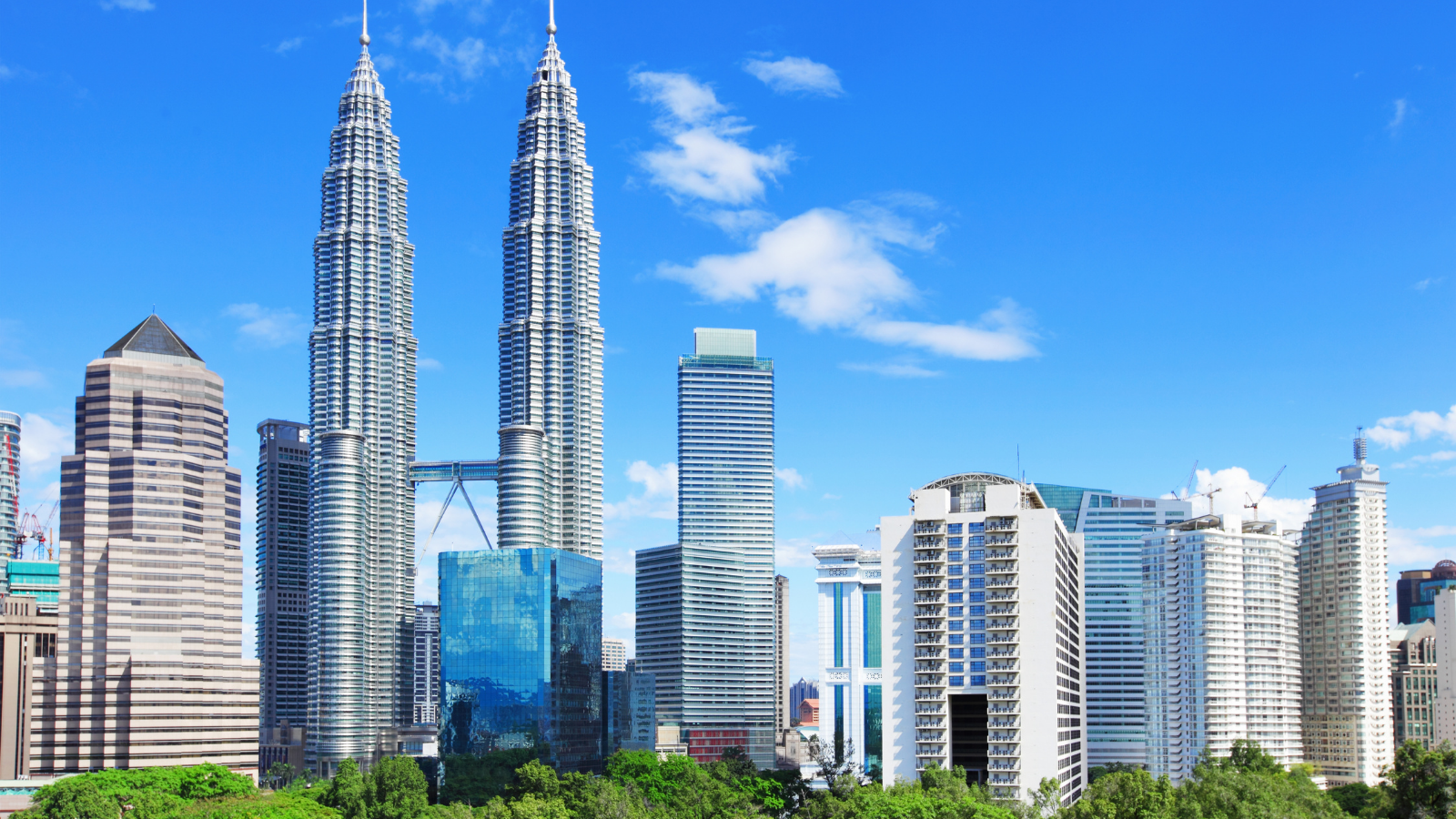
Why Visit:
As Malaysia’s bustling capital, Kuala Lumpur is a vibrant melting pot of cultures, where modern skyscrapers sit alongside traditional neighborhoods and historic sites. The city’s cultural diversity is reflected in its food, architecture, festivals, and landmarks, offering visitors a unique opportunity to experience a blend of Malay, Chinese, Indian, and indigenous traditions within a single urban landscape. From awe-inspiring temples to bustling markets, Kuala Lumpur is the heart of Malaysia’s multicultural spirit.
Highlights:
Batu Caves
One of the most iconic cultural sites in Malaysia, Batu Caves is a limestone hill featuring a series of caves and Hindu temples. Located just outside Kuala Lumpur, this site is a focal point for Malaysia’s Indian Tamil community, especially during the annual Thaipusam festival.
- Stairs and Statue: The site is known for its 272 colorful steps, which lead up to the main cave. Standing at the base is a towering 140-foot golden statue of Lord Murugan, the Hindu god of war and victory, which is one of the tallest statues of its kind in the world.
- Main Cave (Temple Cave): Upon reaching the top, visitors are greeted by the main cave, which houses Hindu shrines and statues illuminated by natural light streaming through an opening in the ceiling. The expansive cave is an architectural marvel, featuring intricately designed statues and vibrant murals.
- Dark Cave: For adventurous visitors, the Dark Cave offers a guided tour showcasing unique limestone formations, stalactites, and a chance to see rare cave-dwelling wildlife, including the endangered trapdoor spider.
- Thaipusam Festival: Visiting Batu Caves during Thaipusam is an extraordinary cultural experience. Thousands of devotees gather here, many carrying kavadis (decorative frames) as a symbol of their devotion, and the atmosphere is one of spiritual fervor and celebration.
Thean Hou Temple
Perched on a hill overlooking the city, Thean Hou Temple is one of Southeast Asia’s largest and most visually striking Chinese temples. Dedicated to Thean Hou, the Chinese sea goddess, this six-tiered temple reflects Kuala Lumpur’s Chinese heritage and offers a peaceful escape from the bustling city below.
- Architectural Beauty: The temple’s architecture is a blend of traditional and modern elements, featuring a grand red and gold façade, intricate dragon carvings, and ornate tiled roofs. Visitors are welcomed by a beautiful courtyard with statues of the 12 animals of the Chinese zodiac.
- Worship and Spiritual Practices: Inside, visitors can observe local Chinese Malaysians engaging in traditional worship practices. The temple honors three goddesses—Thean Hou, Guan Yin (the goddess of mercy), and Shui Wei Sheng Niang (the goddess of the waterfront)—each represented by a statue within the temple.
- Chinese New Year Celebrations: Thean Hou Temple is especially popular during Chinese New Year, when the temple is adorned with thousands of red lanterns, symbolizing luck and prosperity. The festive atmosphere includes dragon dances, cultural performances, and prayers for the coming year.
- Peaceful Gardens: Around the temple are lush gardens featuring bonsai trees, koi ponds, and an herb garden. The serene environment makes it a popular spot for couples and families seeking tranquility within the city.
Jamek Mosque (Masjid Jamek)
One of Kuala Lumpur’s oldest and most architecturally significant mosques, Masjid Jamek (or Jamek Mosque) stands as a testament to Malaysia’s Islamic heritage. Built in 1909 at the confluence of the Klang and Gombak rivers, the mosque combines Moorish, Mughal, and Indo-Saracenic architectural styles.
- Architectural Design: Designed by British architect Arthur Benison Hubback, Masjid Jamek features domes, minarets, and archways reminiscent of North Indian mosques. Its red and white brick façade, domed roofs, and open-air prayer halls make it a distinctive landmark.
- Historical Significance: Masjid Jamek served as Kuala Lumpur’s primary mosque until the National Mosque (Masjid Negara) was built in 1965. It remains a cherished site for local Muslims, representing the city’s long-standing Islamic roots.
- Visiting Experience: Non-Muslim visitors are welcome to explore the mosque’s peaceful grounds outside of prayer times. The mosque provides robes for visitors to wear out of respect for Islamic customs. The beautiful inner courtyard, with its fountains and shaded walkways, offers a serene escape from the city’s hustle.
- Location and Surroundings: Located at Merdeka Square, Masjid Jamek is near several other historic buildings, making it an excellent starting point for a heritage walking tour in Kuala Lumpur’s old city center.
Kota Bharu, Kelantan:
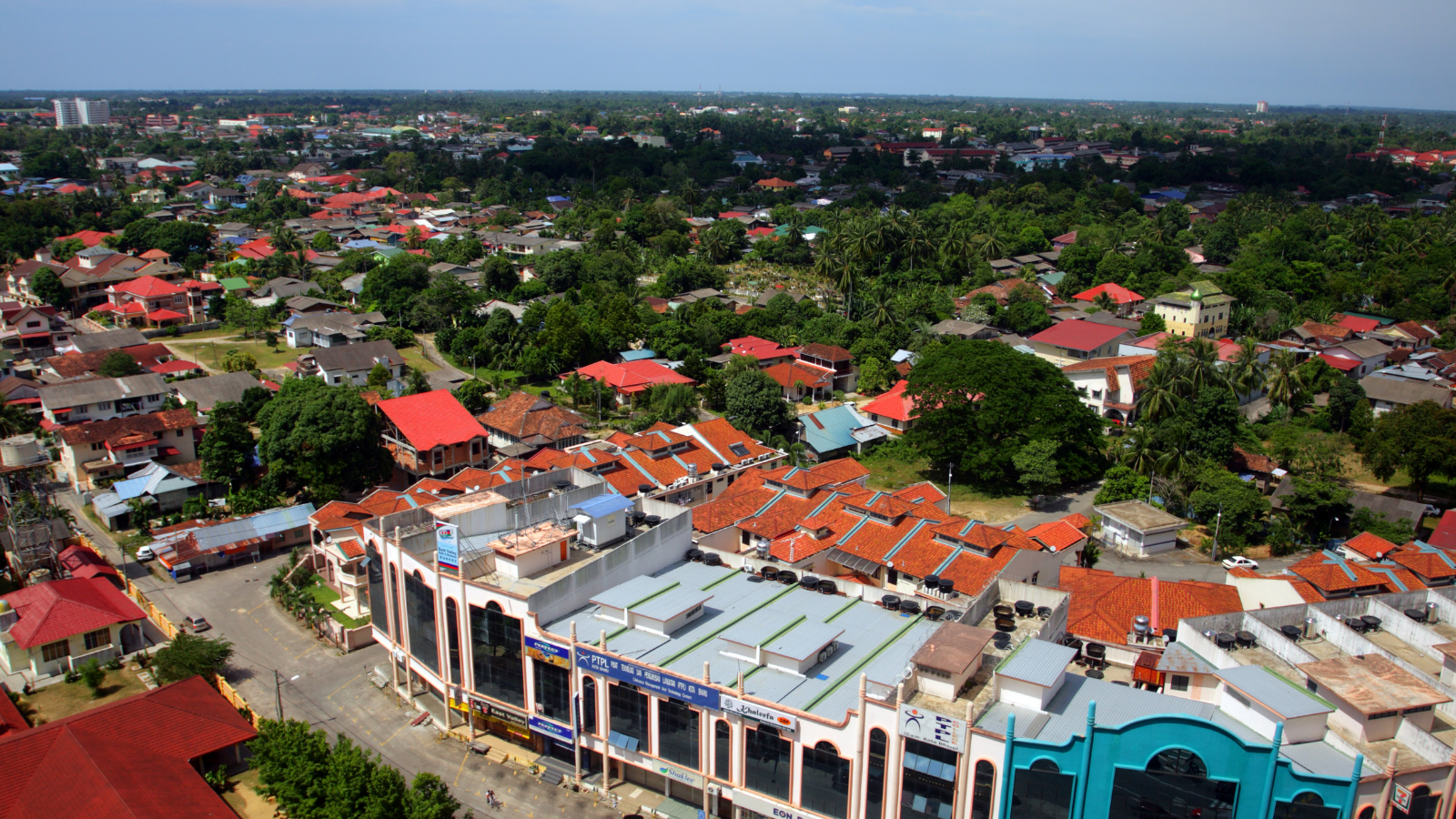
Why Visit:
As the cultural heartland of Malaysia, Kota Bharu in Kelantan provides an immersive experience into traditional Malay life, steeped in customs and history. Known as the cradle of Malay culture, this city offers visitors a rare glimpse into the authentic ways of life of the Kelantanese people. From intricate handicrafts and heritage architecture to vibrant food markets and captivating cultural performances, Kota Bharu is an ideal destination for those looking to connect with the roots of Malay culture.
Highlights:
- Siti Khadijah Market (Pasar Siti Khadijah)
Named after Prophet Muhammad's wife, a respected figure known for her business acumen, Siti Khadijah Market is the bustling heart of Kota Bharu. Unique for its predominantly female vendors, this market is a cultural attraction and a culinary journey. You can taste traditional Malay delicacies like nasi kerabu (blue rice served with fresh herbs and fish), laksam (a local noodle dish with fish gravy), and kuih-muih (Malay sweets). The market also showcases local craftsmanship, including batik textiles, songket (hand-woven fabric), and hand-carved wooden items. It’s a perfect spot to immerse yourself in the flavors, sights, and sounds of everyday life in Kelantan. - Cultural Centre (Gelanggang Seni)
The Gelanggang Seni, or Cultural Centre, is a hub of Malay arts and performances, where visitors can watch traditional Malay arts brought to life. You can witness silat, an ancient Malay martial art combining physical agility with ritualistic elements, often performed with live traditional music. The centre also offers wayang kulit shows, a unique form of shadow puppetry with intricately carved leather puppets depicting characters from folklore and ancient epics. Performances often take place during specific times, so it’s worth checking the schedule to catch these authentic displays of Malay heritage. - Istana Jahar
Built in 1855, Istana Jahar was once a royal residence and now serves as a museum dedicated to the customs, traditions, and culture of Kelantan’s royal and local communities. The palace’s architecture itself is a marvel, with beautifully carved wooden details and traditional Malay motifs. Inside, visitors can explore exhibits showcasing Kelantanese wedding traditions, ceremonial costumes, and ancient weaponry. The museum provides a fascinating insight into the rich traditions that continue to shape the lives of people in Kelantan. Guided tours are available for those who want to delve deeper into the historical and cultural significance of the artifacts on display. - Handicraft Village and Craft Museum (Balai Getam Guri)
Located near Istana Jahar, the Handicraft Village is a must-visit for art lovers. This area is dedicated to preserving Kelantan’s artisanal heritage, allowing visitors to watch skilled artisans at work. Here, you can see demonstrations of traditional weaving, batik printing, silver crafting, and kite-making. The Kite Museum within the village showcases Wau Bulan, the moon kite, an iconic Malaysian kite with its origin in Kelantan. Visitors can purchase handmade crafts directly from artisans, supporting the local community while taking home authentic souvenirs. - Kampung Laut Mosque
Just outside Kota Bharu lies the Kampung Laut Mosque, one of the oldest mosques in Malaysia, built in the 18th century. The mosque exemplifies classic Malay architecture, constructed entirely of timber without the use of nails. The serene surroundings and historic ambiance make it a meaningful stop for those interested in religious heritage and traditional Malay architecture. - Muzium Negeri Kelantan (Kelantan State Museum)
This museum is a treasure trove of Kelantan’s history, showcasing artifacts, photographs, and exhibits that reflect the state’s cultural evolution. With collections spanning from prehistoric times to the present, the Kelantan State Museum provides insight into the indigenous cultures, colonial influences, and social customs that have shaped Kelantanese life. Special exhibitions often feature traditional weaponry, religious artifacts, and local archaeological finds. - Royal Museum (Muzium Diraja Kelantan)
Formerly the residence of Kelantan’s royal family, the Royal Museum allows visitors to step into the life of Kelantan’s monarchy. Exhibits include royal attire, ceremonial weapons, and intricate jewelry, along with portraits of past sultans. The museum provides a close-up look at Kelantan’s royal heritage and its lasting influence on the region’s cultural identity.
Kuching, Sarawak:
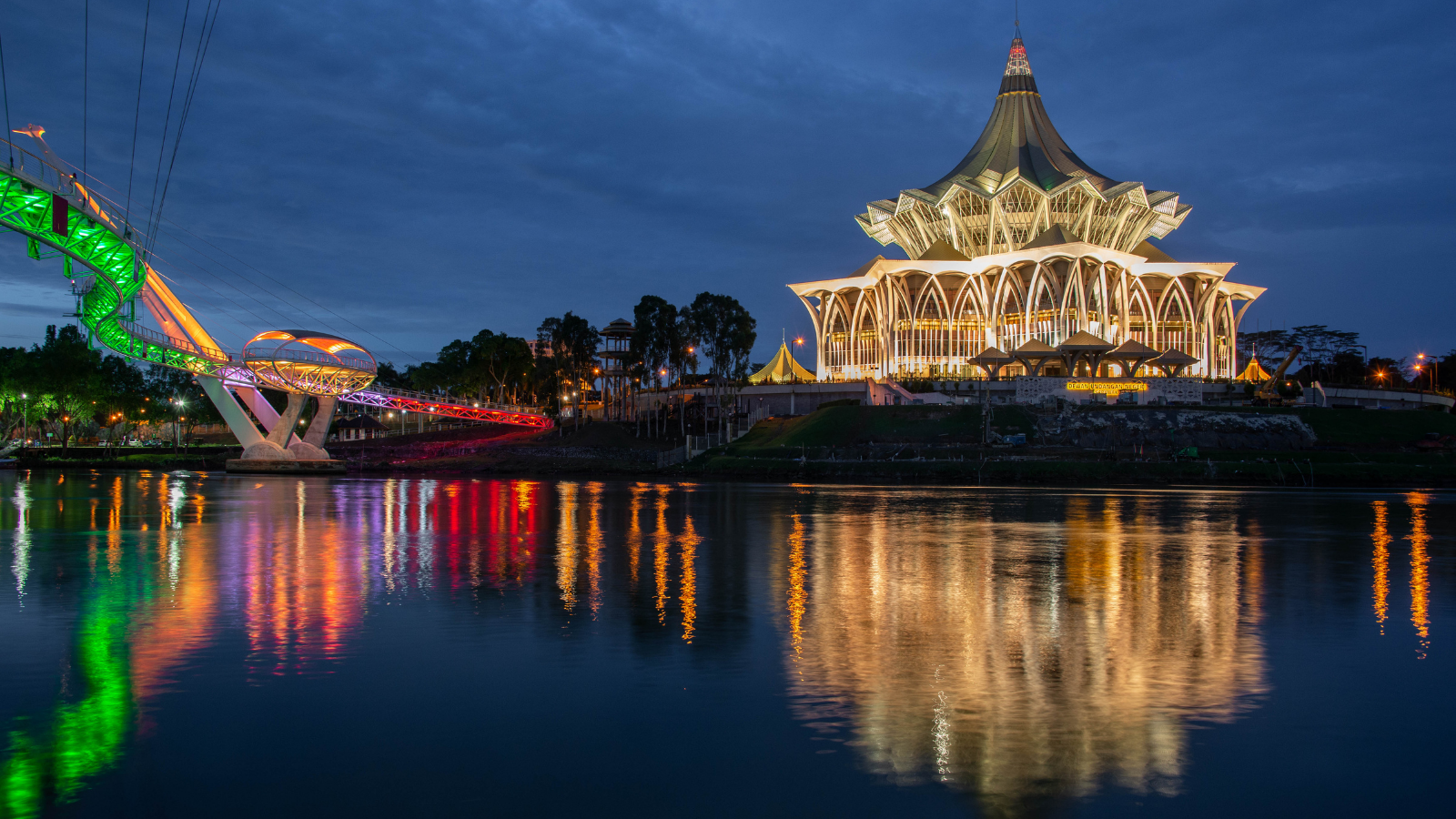
Why Visit:
Known as the “Cat City,” Kuching is the capital of Sarawak and a fascinating destination for travelers interested in the cultural and natural heritage of East Malaysia. Kuching’s charm lies in its unique blend of modern amenities and deep-rooted traditions, particularly from the indigenous Dayak communities, including the Iban, Bidayuh, and Orang Ulu people. Here, visitors can experience a “living museum” of Borneo’s diverse cultures and see some of the island’s most iconic wildlife.
Highlights:
- Sarawak Cultural Village
- Overview: Known as the “living museum” of Sarawak, this village is set in a scenic 17-acre park at the foot of Mount Santubong. The Sarawak Cultural Village offers visitors an immersive experience in the lifestyles, architecture, and daily practices of Sarawak’s ethnic groups.
- What to See: The village features authentic traditional houses from various communities, including the Iban longhouses, Bidayuh bamboo houses, and the ornate wooden houses of the Orang Ulu. Each house is a miniature representation of the way of life, design, and cultural practices of its respective community.
- Interactive Experiences: Visitors are encouraged to participate in activities like traditional weaving, blowpipe shooting, and bamboo dancing. The village also offers cultural performances daily, featuring energetic tribal dances, music, and storytelling, providing a deeper understanding of Sarawak’s indigenous traditions.
- The Borneo Cultures Museum
- Overview: As the largest museum in Malaysia, the Borneo Cultures Museum in Kuching showcases the rich heritage of Sarawak’s indigenous communities, including artifacts, historical exhibits, and interactive displays that trace the history, crafts, and lifestyles of East Malaysia’s diverse ethnic groups.
- Exhibitions and Artifacts: The museum’s permanent collections include traditional weapons, musical instruments, handicrafts, and ceremonial costumes that offer insight into the craftsmanship and artistic expression of the Iban, Bidayuh, Malay, and Chinese communities of Sarawak. A particularly fascinating section focuses on the Dayak headhunter culture, which sheds light on the warrior traditions that were once integral to the Iban and other groups.
- Educational Programs and Workshops: The museum offers hands-on activities, such as beadwork and batik-making workshops, that allow visitors to connect with Sarawak’s cultural heritage. Interactive displays and multimedia presentations make it accessible and engaging for all ages.
- Semenggoh Wildlife Centre
- Overview: Located about 20 kilometers from Kuching, the Semenggoh Wildlife Centre is dedicated to the conservation of orangutans, one of Borneo’s most beloved species. While the center primarily serves as a rehabilitation sanctuary for orangutans rescued from captivity, it is also a vital part of Borneo’s natural heritage.
- Orangutan Sightings: At Semenggoh, visitors have the chance to see semi-wild orangutans in their natural habitat, often during feeding times. These feeding sessions are carefully managed to maintain the orangutans' independence, allowing them to roam freely and forage as they would in the wild.
- Environmental Conservation and Education: The center is focused on conservation efforts, educating visitors on the importance of protecting these incredible creatures and their habitat. Guided tours offer valuable information on the threats facing orangutans and the efforts to protect them from deforestation and poaching.
- Other Wildlife: Although the primary focus is on orangutans, the surrounding forest is home to a range of flora and fauna, including hornbills, macaques, and rare tropical plants, making it a must-visit for nature lovers.
Other Cultural and Historical Attractions in Kuching:
- Chinese Temples and Mosques: Kuching is dotted with beautiful Chinese temples like Tua Pek Kong Temple and historical mosques like the Old State Mosque, each reflecting the city’s multicultural roots.
- The Astana and Fort Margherita: Built in the 19th century by the White Rajahs of Sarawak, these historic sites provide a fascinating look into Kuching’s colonial history and the unique legacy of the Brooke family in Sarawak.
- Kuching Waterfront: The vibrant Kuching Waterfront is a favorite spot for locals and tourists alike, offering street performances, craft markets, and food stalls with views of the iconic Darul Hana Bridge and Mount Santubong in the distance.
Local Cuisine:
Kuching is renowned for its unique culinary scene that combines Malay, Chinese, and indigenous flavors. Visitors can try Sarawak laksa, a spicy noodle soup with a coconut milk base, or kolo mee, a dry noodle dish. For a more traditional experience, head to the local markets for dishes like manok pansoh (chicken cooked in bamboo) and umai (a traditional Iban fish salad).
Kota Kinabalu, Sabah:
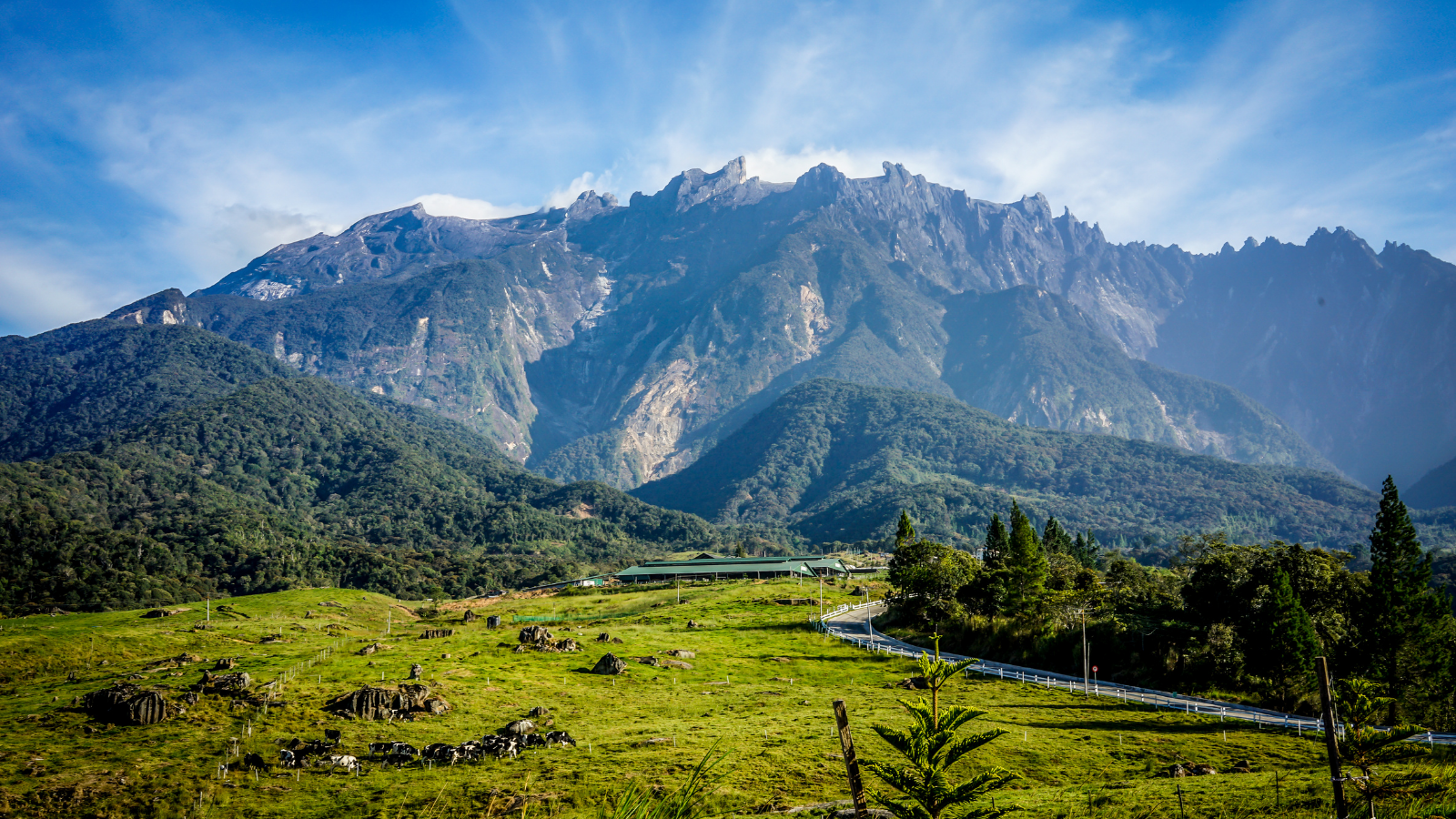
Why Visit:
As the capital of the Malaysian state of Sabah, Kota Kinabalu serves as both the gateway to the natural wonders of Mount Kinabalu and a vibrant hub of cultural diversity. Home to various indigenous groups, Kota Kinabalu offers visitors an immersive experience in traditional arts, local crafts, and multicultural history. This region showcases the harmonious blend of modern and indigenous influences that define Sabah’s unique cultural identity.
Highlights:
1. Mari Mari Cultural Village
A Living Museum of Indigenous Culture
The Mari Mari Cultural Village is a must-visit for anyone interested in Sabah’s rich indigenous heritage. Located about 25 minutes from the city, this “living museum” presents the traditions and lifestyles of Sabah’s major ethnic groups, including the Kadazan-Dusun, Bajau, Lundayeh, Murut, and Rungus communities.
- Traditional Homes: Visitors can tour authentically reconstructed tribal homes and learn about the distinct architecture and customs of each ethnic group. For example, the longhouses of the Murut people, known for their warrior heritage, feature bamboo flooring and elevated designs to protect against floods.
- Craft Demonstrations: The village showcases traditional crafts, such as bamboo cooking, blowpipe-making, and tattoo artistry, giving visitors a hands-on experience of indigenous skills. Guests can try activities like rice-wine making (montoku) and fire-starting using bamboo, adding a deeper appreciation for these ancient skills.
- Cultural Performances: Visitors can enjoy captivating traditional dances like the Sumazau dance of the Kadazan-Dusun and the Magunatip bamboo dance of the Murut. These dances, often accompanied by gongs and other native instruments, celebrate various aspects of Sabah’s culture, from harvest festivals to warrior rituals.
2. Sunday Gaya Street Market
A Colorful Showcase of Local Life
Every Sunday morning, the streets of Kota Kinabalu transform into a bustling open-air market. The Gaya Street Market is one of the best places to experience the vibrant spirit of Sabah, where locals and tourists alike gather to shop, socialize, and enjoy local flavors.
- Handicrafts and Souvenirs: The market is famous for its array of locally crafted souvenirs, including handwoven textiles, jewelry, and carvings. You can find intricate beadwork by the Rungus people, as well as batik sarongs and songket fabric, which are popular throughout Malaysia.
- Local Foods and Snacks: Food stalls at Gaya Street Market offer a sampling of Sabah’s culinary diversity. Try traditional snacks like Kuih Cincin (a fried rice flour treat shaped like a ring), Roti Kahwin (toast with kaya jam and butter), and the iconic Sabah honeycomb cake. For the more adventurous, there are stalls serving tuhau (a local wild ginger dish) and hinava (a raw fish salad marinated in lime, similar to ceviche).
- Floral and Herbal Goods: As Sabah is known for its diverse flora, the market also sells native plants, orchids, and traditional herbs used in indigenous healing practices. The stalls selling handmade soaps, oils, and herbal medicines are popular among visitors interested in natural remedies.
3. State Mosque
A Blend of Modernity and Islamic Tradition
The Kota Kinabalu State Mosque, one of the city’s architectural gems, is an impressive structure that reflects the beauty of Islamic art and culture within a modern context. Its majestic dome and minarets can be seen from afar, while the mosque’s interior is equally captivating.
- Architecture: The mosque’s grand design combines Moorish and contemporary Islamic architectural elements. The main dome, adorned in blue and gold, stands out against the skyline, while intricate calligraphy and Islamic geometric patterns decorate the mosque’s interior walls and ceilings.
- Reflecting Pool: The mosque is surrounded by a serene reflecting pool that adds to its beauty, particularly at sunrise and sunset when the structure is mirrored in the water, creating a breathtaking sight that draws photographers from around the region.
- Cultural Significance: While primarily a place of worship, the State Mosque also serves as a cultural landmark, open to non-Muslim visitors outside prayer times. It offers insight into the Islamic faith’s importance in Sabah, and respectful visitors can learn about local Islamic practices and the mosque’s role in the community.
FAQs:
1. What is the best time to visit Malaysia’s cultural sites?
The best time to visit Malaysia for cultural exploration is during the dry season, from March to October. This season offers pleasant weather for outdoor activities and festivals.
2. Are Malaysia’s cultural destinations accessible for non-Muslims or non-locals?
Absolutely! Malaysia’s cultural destinations are open and welcoming to all visitors. However, it’s essential to be respectful of local customs, especially in religious sites.
3. What cultural events or festivals should I experience in Malaysia?
Some must-see festivals include Hari Raya Aidilfitri (Eid), Chinese New Year, Deepavali, and Wesak Day. Festivals like Thaipusam at Batu Caves are also popular with visitors.
4. Are guided tours available at these cultural destinations?
Yes, guided tours are available at many of Malaysia’s cultural sites, such as Sarawak Cultural Village, Thean Hou Temple, and George Town’s historic sites. Tours often provide deeper insights into the history and significance of these places.
5. What should I wear when visiting Malaysia’s cultural sites?
Modest clothing is recommended, especially when visiting religious sites such as mosques and temples. It’s also helpful to wear comfortable footwear for walking and exploring.
6. Can I take photographs at cultural and religious sites in Malaysia?
Photography is generally allowed in most cultural sites, but it’s best to check first, especially in religious areas. Always be mindful of signs and respect local rules regarding photography.
7. Is there an entry fee for cultural attractions in Malaysia?
Some cultural sites in Malaysia, like Batu Caves, are free to enter, while others, like Sarawak Cultural Village, may have an entry fee. Prices vary, so checking in advance is advisable.
8. What local foods should I try when visiting these cultural destinations?
Try the local specialties at each destination, like Penang’s char kway teow, Malacca’s Nyonya laksa, and Kelantan’s nasi kerabu. Each region has unique dishes that reflect its cultural influences.
9. How can I travel between these cultural destinations?
Malaysia has an efficient network of flights, buses, and trains. Domestic flights are available for East Malaysia, while Peninsular Malaysia has good road and rail connectivity.
10. Are these cultural destinations family-friendly?
Yes, many of Malaysia’s cultural attractions are suitable for families. Destinations like Sarawak Cultural Village and Batu Caves are interactive and enjoyable for all ages.






